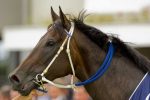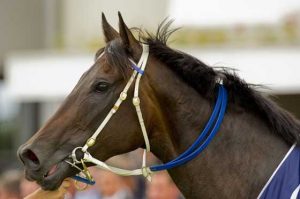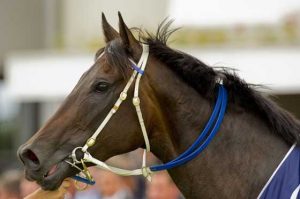 On the 2010 World Thoroughbred Rankings the distinction of being the top-rated older sprinter didn’t go to Equiano, Regal Parade or any of Europe’s other leading sprinters. They were considered at least 4lb inferior to the flying Australian filly Black Caviar, so it was rather disappointing to hear that Black Caviar’s trainer, Peter Moody, is averse to sending her to Europe, at least in 2011.
On the 2010 World Thoroughbred Rankings the distinction of being the top-rated older sprinter didn’t go to Equiano, Regal Parade or any of Europe’s other leading sprinters. They were considered at least 4lb inferior to the flying Australian filly Black Caviar, so it was rather disappointing to hear that Black Caviar’s trainer, Peter Moody, is averse to sending her to Europe, at least in 2011.
It’s a safe bet, though, that other Australian trainers will not share Moody’s reluctance. They’ve landed four victories in the King’s Stand Stakes in the last eight years, plus two in the Golden Jubilee and one in the July Cup. There were as many as six Australasian-bred horses in the 2010 Golden Jubilee.
We have already seen a son of one of the first raiders switch hemispheres to great effect, with Starspangledbanner emulating his sire Choisir in the Golden Jubilee. Of course he then added the July Cup, a race in which Choisir had finished a fine second to Oasis Dream.
Star Witness, one of the likely Australian raiders for this year’s Group 1 sprints at Royal Ascot and Newmarket, is also by one of the Australasian stars which have underlined the quality of the best horses bred in Australia and New Zealand. Star Witness is a son of Starcraft, the 2004 Australian Derby winner who joined Luca Cumani to win the Prix du Moulin and Queen Elizabeth II Stakes.
Starcraft retired initially to Cheveley Park Stud in 2006 before moving to Arrowfield Stud in Australia. A son of the top European sprinter-miler Soviet Star, Starcraft was sufficiently popular to attract a three-figure book at Cheveley Park but injury prevented the stallion from returning to Europe in 2007.
At the moment this doesn’t look to have been Europe’s loss, as that first British crop has so far produced nothing better than the speedy 2009 two-year-old Don’t Tell Mary, the Group-placed German colts Baschar and Keep Cool, and the fairly useful handicappers Soul Station and Lutine Bell. Starcraft will have a further chance to prove himself in the northern hemisphere as his owner Paul Makin sent a team of ten mares from Australia to Tattersalls’ December Sales in 2009, all carrying Starcraft foals to northern hemisphere time.
This last move typifies the bold approach that the ebullient Makin employed in promoting his stallion. Spending freely at the breeding stock sales, Makin bought a sizeable number of mares specifically to breed to Starcraft. He sold 18 of them carrying first-crop foals in Australia in 2007.
When the second batch of mares was due to sell, Makin’s agent Grant Pritchard-Gordon was asked for his views.
“Paul’s intention remains the same…to get the second Starcraft foal crop (from mares selected by us) out on to third-party farms,” Pritchard-Gordon explained. “Paul has given his horse an amazing opportunity to succeed and breeders have been totally complimentary about his novel way of doing it. When this second tranche has been sold, Paul will take a rest from his promotional duties. The next step will be to inspect the 2008/9 yearling crop and select the best ones to purchase at auction to carry the Makin ‘red, white and blue’ colours.”
With Makin’s help Starcraft covered 151 mares in his first year at Arrowfield and 138 in his second, at fees of AUS$33,000. After his book plummeted to 47 mares in his third season, his fee fell to $22,000 (with his book rebounding to 109). However, it was up to $38,500 in his fifth season in 2010, after Star Witness had advertised his sire’s potential by winning firstly the Listed Talindert Stakes and then the Group 1 Blue Diamond Stakes. Since then Starcraft’s first Australian crop has been represented by We Can Say It Now, a dual Group 1 winner over a mile in New Zealand, and by the Listed winners Singapore Sling and Ain’tnofallenstar. His second crop has also produced a Group performer in Hallowell Belle, runner-up to the exciting Sepoy in the Blue Diamond Stakes in February.
Star Witness has also added to Starcraft’s achievements by training on into a leading sprinter at three. He decisively won the six-furlong Group 1 Coolmore Stud Stakes in 2010 and more recently was second behind Black Caviar in the Patinack Farm Classic.
A British campaign beckons, with trainer Danny O’Brien, who trained King’s Stand challenger Glamour Puss, looking forward to another chance.
“Having had the experience of taking a horse to the UK in recent years, I am extremely confident Star Witness is the perfect type to continue the success Australian-bred sprinters have enjoyed over there,” he said.
Whatever Star Witness’s fate during the next few months, he has already secured a place as a stallion at Widden Stud.
British racegoers are likely to be a little bewildered by the bottom half of Star Witness’s pedigree. His dam, the Group 3-winning sprinter, is by Lion Hunter. The grey never managed to win a stakes race during his eight-race career but was runner-up in The Galaxy, a Group 1 over 1,100 metres. This, coupled with an eye-catching pedigree, was enough to earn him his chance at stud from 1998. In addition to being a son of Danehill, he was out of Pure Of Heart, a top Australian sprinter sired by the 1977 King’s Stand Stakes winner Godswalk from the Portland Handicap winner Audrey Joan.
Lion Hunter justified his chance at stud by coming up with top performers in Gold Edition and Lovely Jubly.
Opportunity the key to Elusive Quality’s success with Danehill mares
Mention of Sepoy in my notes on Star Witness acts as a reminder that it often isn’t easy to assess accurately how successful a certain nick is proving to be.
All a stallion needs to do is sire a good winner or two from mares from a particular sire line and he will be guaranteed many more mares from the same line in the following seasons.
When the American sprinter Elusive Quality arrived in Australia for the first time in the summer of 2003, he was basking in his feat of having been one of the leading American-based first-crop sires of 2002. That first crop contained two notable colts out of mares by Danzig’s brilliant son Dayjur. The first, Elusive City, had won the Prix Morny and the other, Great Notion, was to go close to winning the Grade 1 King’s Bishop Stakes at the 2003 Saratoga meet. Another of his first-crop stakes winners was out of a mare by Danzig’s son Ascot Knight. Consequently Elusive Quality was welcomed by Australian breeders desperately seeking a mate for their Danehill mares in an industry dominated by sons of Danehill.
To the end of 2010, Elusive Quality had no fewer than 84 foals out of Danehill mares, with the great majority of them being in Australia. One of his first Australian foals out of a Danehill mare was Camarilla, who followed up her victory in the Blue Diamond Prelude with a Group 1 win over the males in the AJC Sires’ Produce Stakes. Camarilla’s high-class achievements saw Elusive Quality’s Australian book jump from a previous high of 99 mares to 173 mares in 2007. That bumper crop contained 131 live foals and one of them is Sheikh Mohammed’s unbeaten Sepoy, who has looked championship material in easily winning the 2011 Blue Diamond Prelude and the Group 1 Blue Diamond Stakes.
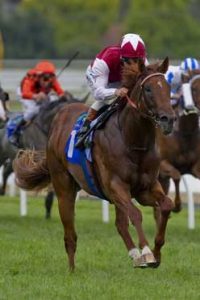 The appearance of these two star two-year-olds no doubt justifies the number of Danehill mares which have been sent to Elusive Quality, but there are only two other stakes winners – both Listed winners – among their 84 foals. That’s 5%, which isn’t far below Elusive Quality’s results with the general population. In fact the Darley stallion has much better statistics in the northern hemisphere with mares by other sons of Danzig, with eight stakes winners from 69 foals (11.6%). As Elusive Quality sired Camarilla from Camarena, a winner of the Queensland Derby, and Sepoy from a sister to Camarena, we are entitled to question how much these Group 1 winners owe their talent to being sired by Elusive Quality from grand-daughters of Danzig.
The appearance of these two star two-year-olds no doubt justifies the number of Danehill mares which have been sent to Elusive Quality, but there are only two other stakes winners – both Listed winners – among their 84 foals. That’s 5%, which isn’t far below Elusive Quality’s results with the general population. In fact the Darley stallion has much better statistics in the northern hemisphere with mares by other sons of Danzig, with eight stakes winners from 69 foals (11.6%). As Elusive Quality sired Camarilla from Camarena, a winner of the Queensland Derby, and Sepoy from a sister to Camarena, we are entitled to question how much these Group 1 winners owe their talent to being sired by Elusive Quality from grand-daughters of Danzig.
I would be more inclined to think that they owe their class to being by a stallion capable of siring the occasional star, such as Smarty Jones, Raven’s Pass and Quality Road, out of mares from a top family. After all Canny Miss, the second dam of Camarilla and Sepoy, was a three-parts-sister to the Group 1 winners Canny Lad and Canny Lass.
Canny Lad was a champion two-year-old who won the Golden Slipper Stakes, which is Sepoy’s target on April 2.
Depth of inbreeding under the spotlight
The excellent French internet news-sheet Jour de Galop ran an interesting analysis of the pedigrees of all the two-year-old stakes winners in France in 2010. They found that 20 of the stakes winners – some 54% – were inbred within four generations and that another 14 were inbred in the first five generations. This added up to 92%, with only three stakes winners – the other 8% – having no duplications in the first five generations.
This underlines how difficult it can be for breeders to avoid inbreeding in today’s industry, where a smaller number of high-class stallions cover much larger numbers of mares.
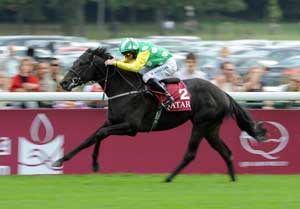 Unsurprisingly, Northern Dancer was easily the most ubiquitous name among the duplicated stallions, with 31 of the 37 stakes winners being inbred to him. More surprising was the number of stakes winners whose pedigrees featured three or more lines to this revolutionary stallion. As many as six Group winners (Roderic O’Connor, Wootton Bassett, Broox, Espirita, Pontenuovo and Prairie Star) had three or more lines, with a further eight Listed winners having three or four.
Unsurprisingly, Northern Dancer was easily the most ubiquitous name among the duplicated stallions, with 31 of the 37 stakes winners being inbred to him. More surprising was the number of stakes winners whose pedigrees featured three or more lines to this revolutionary stallion. As many as six Group winners (Roderic O’Connor, Wootton Bassett, Broox, Espirita, Pontenuovo and Prairie Star) had three or more lines, with a further eight Listed winners having three or four.


